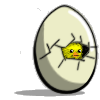|
So I've got a shelf I'm making out of cherry ply vaneer. I've cut all the pieces, and I'm in the staining/sealing stage. One of the sides is done but in the process I accidentally got seal on the unfinished side. So my question is: Without sanding (because I worry the vaneer is too thin to sand) how can I remove water based oil modified polyurethane (minwax) without damaging the raw wood or affecting it's ability to take stain?
|
|
|
|

|
| # ? May 29, 2024 07:45 |
|
Are there good books or guides to veneering? As a man of modest means, I'd rather build a piece of furniture out of oak or even plywood and then put mahogany or cherry veneer over it than try solid mahogany or cherry but I don't actually know how to properly cut it or apply it or anything.
|
|
|
|
Stultus Maximus posted:Are there good books or guides to veneering? As a man of modest means, I'd rather build a piece of furniture out of oak or even plywood and then put mahogany or cherry veneer over it than try solid mahogany or cherry but I don't actually know how to properly cut it or apply it or anything. Veneer isn't exactly cheap on its own, and in my limited experience, it's not trivial to apply cleanly over large areas. I'd recommend looking for pre-veneered plywood and then using limited amounts of solid wood of the appropriate species for framing and other small elements.
|
|
|
|
This was my experience as well. It ended in disaster.
|
|
|
|
I spotted a cheap wood lathe in the middle aisle of my local lidl a few weeks ago, predictably wrecked the thing in under a week, and then bought a better one. Since then, I've been steadily making bigger and bigger piles of woodshavings. Here's what started off this morning as an ash log from the woodpile.  It's sanded to a 600 grit finish, followed by 2 coats of Tung oil. I'm going to work my way through the contents of the woodpile for practice before I actually start spending money on 'proper' wood. I'm pretty sure there's some 2 year old sycamore in there somewhere.
|
|
|
|
TooMuchAbstraction posted:Veneer isn't exactly cheap on its own, and in my limited experience, it's not trivial to apply cleanly over large areas. I'd recommend looking for pre-veneered plywood and then using limited amounts of solid wood of the appropriate species for framing and other small elements. I was planning to use the bandsaw to cut my own veneer. What do you mean by "large areas?"
|
|
|
|
Large flat panels like on a dresser or whatever will be difficult to apply veneere to evenly and without bubbles. There are special veneer presses that use hand screws or hydraulics to evenly and flatly apply pressure to the veneer while the glue cures. Vaccuum bagging is an option now but that's another investment in equipment and a whole new skill set to develop. For somebody looking at veneering as a way of saving money your looking at spending thousands more on specialized tools.
|
|
|
|
Soylent Yellow posted:I spotted a cheap wood lathe in the middle aisle of my local lidl a few weeks ago, predictably wrecked the thing in under a week, and then bought a better one. Since then, I've been steadily making bigger and bigger piles of woodshavings. You never need to buy "real" wood, random branches and pieces of firewood are just the perfect size for lathing. And if you want a bigger chunk of wood you can just glue a pile of random garbage scraps together; once you turn it they will look beautiful anyway.
|
|
|
|
Big Dick Cheney posted:I know that I can use my thickness planer for face joining but I don't think making an edge joining jig for it is a good idea. Would it be better to get a benchtop jointer or a jointing hand plane? If I go the hand plane route, what should I look for? I hear used is the way to go but I don't know much more than that. Or is an edge jointing jig the best move? It is workable if you have a true 90 cut from your tablesaw. That's the crucial part. The optimal way I found with my planer was to bunch up several rips of the same width and run them through en masse.
|
|
|
|
Mr. Mambold posted:It is workable if you have a true 90 cut from your tablesaw. That's the crucial part. The optimal way I found with my planer was to bunch up several rips of the same width and run them through en masse. The true 90 is the motherfucker. Any time I move my table saw from 90 degrees I have to pop out my magnetic level again because chances are the positive stop at 90 has wiggled loose and won't be quite right.
|
|
|
|
Skyarb posted:So I've got a shelf I'm making out of cherry ply vaneer. I've cut all the pieces, and I'm in the staining/sealing stage. One of the sides is done but in the process I accidentally got seal on the unfinished side. So my question is: Stultus Maximus posted:Are there good books or guides to veneering? As a man of modest means, I'd rather build a piece of furniture out of oak or even plywood and then put mahogany or cherry veneer over it than try solid mahogany or cherry but I don't actually know how to properly cut it or apply it or anything. https://www.amazon.com/Craft-Veneering-Craig-Thibodeau/dp/1631869000 Veneer is awesome and allows you to do tons of cool stuff that you just can't do with solid wood. The quality and selection of veneer available is nuts, and its easy to get it shipped to your door. The best logs get sold for veneer, and veneer is about the only place to regularly find 16"+ wide walnut. That being said, it's not easy and it is slow. I've never tried sawing my own, but I would want access to a wide belt/drum sander to thickness it if I did. I find edge-matching long veneer like for a tabletop to be a pain, and its much easier to run a board through the TS and get a perfect glue joint than futz around with a razorblade and straightedge. I've mostly veneered in a vacuum bag. When it works, it works great, (and when it doesn't work, chunk $300 of veneer and a day of matching it up in the dumpster) but they're expensive and need a good bit of space. I've also done cauls and clamps and that works...okay. It's hard to get consistent pressure in the middle of a big caul to keep from getting bubbles. I would look into hammer veneering with hot hide glue. It's how all the finest veneered furniture was made, and they veneered crazy curves and round columns in crotch mahogany all the time with it. It's something I really want to learn more about and mess around with. It's more or less reversible and correctible which would help with my big veneer problems, but I think it would be difficult on large surfaces.
|
|
|
|
Danhenge posted:The true 90 is the motherfucker. Any time I move my table saw from 90 degrees I have to pop out my magnetic level again because chances are the positive stop at 90 has wiggled loose and won't be quite right. For jointing, if you flip one slat over when cutting you can compensate for it. That way your 89.5 and 90.5 match up. But yeah use your angle gauge anytime you swap blades, move it, or need an exact angle.
|
|
|
|
Weka posted:I'd like it to last a long time and I plan on hitting it with a steel hammer, more than one hammer on my belt is impractical, so steel buttplate I figure is a must. If I can't find one with the full tang my current forerunner is the narex super 2009, but they don't come in 19mm so I guess I have to settle for 20 or 18mm. The marples "construction chisel" has a steel butt cap and is probably standard high-carbon tempered steel. The chisel linked, the irwin marples "high impact" chisel, is using a harder alloy blade. The good woodworking Stanleys aren't the Fatmax, they're the bailey/sweethearts. A stanley fatmax is a reasonable quality tool, which is to say, perfectly fine but likely on par to the irwin marples. The steel being maybe made in sheffield (but probably not, the sheffield mark can means assembled there) doesn't really matter anymore. High carbon steel from china, etc. is just as good nowadays.
|
|
|
|
JEEVES420 posted:For jointing, if you flip one slat over when cutting you can compensate for it. That way your 89.5 and 90.5 match up. But yeah use your angle gauge anytime you swap blades, move it, or need an exact angle. Wow, a novel slatflip. How many slats could a slatflipper flip at a slatflipper slap fight fest. That could also have the extra benefit of reversing grain to neutralize quirky grained wood that likes to cup. like red oak, I'm looking at you
|
|
|
|
Kaiser Schnitzel posted:You can sand the area with the drips by hand with 150 or 220 or something. You should be able to sand off most of the finish without sanding through veneer. Thanks for the shout-out, my recommendation for Stultus Maximus (or anybody) is if you want to get into veneering to save money....don't. By the time you factor in the substrate (good quality baltic birch, lumber core ply, or MDF), glue, vacuum press/million clamps & cauls, plus the time involved you're not much ahead of just buying the solid wood. If you want to get into veneering to use crazy figured woods you can't get in solid, have full control of the grain of your piece or build things where solid wood wouldn't work...then veneer is your ticket. This is just my opinion, obviously savings can be had, but I think the scale is more on the factory end and not on a single person workflow.
|
|
|
|
This got a laugh out of me. Something Festool would have been better.
|
|
|
|
What’s the word on Stanley transitional planes? The local wood shop has a couple of 36s for $50-70. Yea or nay for baby’s first plane?
|
|
|
|
dupersaurus posted:What’s the word on Stanley transitional planes? The local wood shop has a couple of 36s for $50-70. Yea or nay for baby’s first plane? Do you have access to a shop with a powered jointer? If so go nuts. Also if you have access to another good 18-24" plane and know how to use it, you're good. I actually like transitionals and am restomodding one right now. Edit: I've never found an unmodified transitional with a truly flat sole, you're gonna need to flatten it at least. You may also want to eventually swap in a modern thicker blade, which will have the bonus effect of tightening up the mouth. GEMorris fucked around with this message at 06:14 on Dec 30, 2020 |
|
|
|
Stultus Maximus posted:Are there good books or guides to veneering? As a man of modest means, I'd rather build a piece of furniture out of oak or even plywood and then put mahogany or cherry veneer over it than try solid mahogany or cherry but I don't actually know how to properly cut it or apply it or anything. I spent 10 years veneering stuff for Sunseeker and outside of edge banding and the odd small panel its not something thats really practical for the homeworker on a large scale unless you can DIY yourself a vacuum bag or have a poo poo tonne of weights so you can get loads of pressure over the entire board. It is possible, but I would also never veneer over an actual Hardwood because of the cost involved. You're spending a fortune on Oak just to cover it in a small fortunes worth of veneer. The best thing to do is use veneered ply/MDF for the structure and edgebanding. If you have curved surfaces the iron on veneer works well if you also put a layer of wood glue down and leave it to almost cure before ironing it on. That gives it a very good fix and I don't think we ever had a bit of veneer lift up using that method. Don't use contact adhesive as you end up with dozens of bubbles where the glue has grabbed before you've completely flattened the veneer. Softwoods don't work very well when applying veneer over the top. I'm still not sure why that is but it just never seemed to work out.
|
|
|
|
Okay, definitely eliminating large piece veneer from any plans. Still might pick up a book to see if it's something I want to do for small chests or suchlike.
|
|
|
|
Fuuuuuuuuuck. . . Veneers. If you really want to use them, start practicing on smaller pieces and different techniques, then start working your way up to larger pieces. I have sworn off them forever.
|
|
|
|
Blistex posted:Fuuuuuuuuuck. . . Veneers. Oh yeah, I wasn't planning to start this next month. Maybe next year depending on if my kids will ever leave the house again, lol.
|
|
|
|
I have a heated vacuum press and I still only gently caress with wood backed veneer on flat panels.
|
|
|
|
Stultus Maximus posted:Are there good books or guides to veneering? As a man of modest means, I'd rather build a piece of furniture out of oak or even plywood and then put mahogany or cherry veneer over it than try solid mahogany or cherry but I don't actually know how to properly cut it or apply it or anything. Along with the other comments here, you don't need too many special tools to do veneering but it depends on what kind of veneering you are doing. I've done a limited amount but in a more "traditional" way with a veneer hammer and animal hide glue. If you are using the super thin veneer you can buy in rolls, then a press is nice, especially if you are doing marquetry or whatever. But for just adding veneer, what I've done is use baltic birch as a base, then cut 1/16 inch veneer myself. At 1/16 its pretty thick, or even go a bit thinner, so you can handle it. And then using the hide glue and a hammer press it on, and use a hot iron to loosen it up as needed. I did my desktop that way, its a big sheet with walnut veneer on top of it. BTW I'm talking about the hide glue you melt in a little pot and apply while hot.
|
|
|
|
what's wrong with just building something out of oak and lettin' it look like oak, oak is great
|
|
|
|
Yah I wouldn't use Oak for a veneer base, but you can, you want a stable wood of some kind, so plywood/baltic birch is a good fit.
|
|
|
|
dupersaurus posted:What’s the word on Stanley transitional planes? The local wood shop has a couple of 36s for $50-70. Yea or nay for baby’s first plane? I haven't used a transitional in earnest, but with my little experience with them, I don't like them. They are very hard to adjust, you really have to cram your fingers into the tiny space between the tote and the depth adjustment knob. Most of the examples I've seen have worn soles, so you'd need a way to flatten that (jointer, or a good length try plane). The No 36 is short for a general purpose plane. It would probably be fine for smoothing work, where you don't do a lot of depth adjustments. Fifty bucks seems like a lot to me, but there is some value in buying something you can hold in your hands (vs eBay).
|
|
|
|
Since we’re talking about veneering, how difficult/expensive would it be for me to veneer a sunburst pattern on a 26” circle (for a Crokinole board)? This would be on Baltic Birch or MDF. I did some looking into it before and it seemed like “if you don’t already have the equipment no way it’s worth it” Something like this random example: 
Elysium fucked around with this message at 20:57 on Dec 30, 2020 |
|
|
|
Elysium posted:Since we’re talking about veneering, how difficult/expensive would it be for me to veneer a sunburst pattern on a 26” circle (for a Crokinole board)? This would be on Baltic Birch or MDF. I feel like that pattern specifically involved resawing 8 thin slices off of the same board, cutting them into 45-degree wedges, and gluing them in. I don't think that you can ordinarily get matched veneers like that, so you'd have to cut them yourself, which gets into the "have a drum sander" stuff that Kaiser Schnitzel was talking about. Even then, I feel like it'd be hard to achieve in a home shop, simply because you need to cut very thin slices to not have significant variation in the grain appearance from one slice to the next, and that's hard to do. That's a very cool look though.
|
|
|
|
anyone have any tips/recommendations on a smallish dust collector. My shop area is tiny, I'm likely just gonna be moving the hose from machine to machine, thinking a 1HP or 1.5HP. I'm in Canada and prices seem to vary pretty wildly based on brand. Something like this: https://www.busybeetools.com/products/dust-collector-1hp-570cfm-1-mic-bag-csa-ct053.html seems decent but I don't really know anything in depth about them.
|
|
|
|
Toast posted:anyone have any tips/recommendations on a smallish dust collector. My shop area is tiny, I'm likely just gonna be moving the hose from machine to machine, thinking a 1HP or 1.5HP. I'm in the same boat, interested to hear tips/recommendations. I slapped one of these separators on a 5-gal Home Depot bucket. It works to a degree, maybe half the dust accumulates in the bucket, and the other half ends up in (the filter of) my small shopvac. I suspect I need to cut the bottom out of another bucket and make this bucket contraption taller, so most of the dust falls down into the bucket instead of making it to the shopvac? Not sure.
|
|
|
|
Elysium posted:Since we’re talking about veneering, how difficult/expensive would it be for me to veneer a sunburst pattern on a 26” circle (for a Crokinole board)? This would be on Baltic Birch or MDF. If you've got someone who can cut the veneers for you its possible with just a table saw, router and a shooting board to get a perfect fit on the veneers. You'd need a circle jig for the router too but thats relatively simple to make. You can't generally buy veneers like that, however if you have a bandsaw you can cut them yourself or if you are near a high end furniture maker you might be able to barter for some of their veneers. I have bought off cuts from my previous employer a few times and thats entire logs sliced into veneers so you can get some good stuff that way.
|
|
|
|
epalm posted:I'm in the same boat, interested to hear tips/recommendations. Yeah I'm doing the similar duststopper method from home depot atm. It definitely helps but I want a proper solution at some point for my bigger machines.
|
|
|
|
ColdPie posted:I haven't used a transitional in earnest, but with my little experience with them, I don't like them. They are very hard to adjust, you really have to cram your fingers into the tiny space between the tote and the depth adjustment knob. Most of the examples I've seen have worn soles, so you'd need a way to flatten that (jointer, or a good length try plane). The No 36 is short for a general purpose plane. It would probably be fine for smoothing work, where you don't do a lot of depth adjustments. Fifty bucks seems like a lot to me, but there is some value in buying something you can hold in your hands (vs eBay). Yeah I missed/forgot that #36 is a smoothing plane in transitionals and let me echo that transitional smoothers *loving suck*. I will still stan fore/jointer transitionals (#28-34) as a good cheap way to get a long jointer as long as you have a means to flatten the thing.
|
|
|
|
TooMuchAbstraction posted:I feel like that pattern specifically involved resawing 8 thin slices off of the same board, cutting them into 45-degree wedges, and gluing them in. I don't think that you can ordinarily get matched veneers like that, so you'd have to cut them yourself, Ok well let’s ignore that specific type of perfectly matched pattern in favor of “some kind of cool mix of different veneer samples in a vaguely radial design” and then move on to the feasibility and costs of the actual process of applying it to a board without currently having any tools or knowledge related to veneers.
|
|
|
|
Toast posted:Yeah I'm doing the similar duststopper method from home depot atm. It definitely helps but I want a proper solution at some point for my bigger machines. Bigger is better, even for small shops. The harbor freight "2" hp is the gold standard for cheap dust collectors. Have a plan for either exhausting it outside of plan to upgrade the filter, the bags most come with are worthless/don't filter finely enough.
|
|
|
|
Has anyone used/made milk paint and have any good resources/advice? I need to build a tool cabinet and that seems like a good place to experiment with it.Elysium posted:Since we’re talking about veneering, how difficult/expensive would it be for me to veneer a sunburst pattern on a 26” circle (for a Crokinole board)? This would be on Baltic Birch or MDF. I don't know about as a first project, but this is a good example of the kind of thing veneer is great for and I think it is very doable. You just....can't do that design in solid wood, and it's small enough you could probably get away with a big caul and lots of weights and no vacuum press. It might also be a good candidate for the iron on method serious gaylord mentioned, though I haven't done that with complex patterns. Definitely practice with shop sawn poplar or something cheap and see how feasible it is before buying a bunch of nicer veneer. Veneering is tricky and can be very frustrating, but if you figured it out it would open up a ton of cool possibilities for your boards. This would be better suited to commercial veneer than shop-sawn IMO. Commercial veneer is sliced from the log and so there is no kerf, so adjacent slices are almost identical, and the fact that it is thinner means that slice 1 and slice 8 are going to look much closer together than shop sawn where you are probably going to need a 1.25" board to get 8 slices. It would probably still match well if it was really straight grained, quartersawn stuff, but less so on wild flat grain. Veneer is usually sold by the slice and in sequence, so if you get 8 slices from the same flitch, they should match well. I am sure there are places online that sell shorter lengths (ebay, maybe?) vs. whole 8-10' sheets.
|
|
|
|
Kaiser Schnitzel posted:Has anyone used/made milk paint and have any good resources/advice? I need to build a tool cabinet and that seems like a good place to experiment with it. I have not made milk paint, but have used it a couple of times. My workbench base is orange milk paint (pumpkin) under federal blue, it's a nice look and some high wear spots are showing more orange than blue which was exactly the look I was going for. This is the guide I followed for the two part finish http://chairnotes.blogspot.com/2013/06/bullet-proof-finish.html The last time I used it on the back of some shelves I followed Chris Schwarz's mixing advice from one of his books (mix it way thinner than the package recommends). Here's a pic from when my bench was brand new.  You nailed it for that radial match, it would very difficult getting a good and tight match with thicker veneer. Part of the beauty of the super thin stuff is you can easily cut through multiple pieces at once with a knife or saw, so you make two halves of a circle and they are both a bit bigger (183 degrees instead of 180). No big deal, just lay them on top of eachother and cut through both at once for a perfect fit; no one will notice a few of the segments are a couple degrees smaller. I have not done a radial match, but I will be attempting one soon for a small side table once I get up and running. I had bad luck with no bandsaws available last week, but I had good luck ordering a 12" jointer/planer combo machine yesterday, so looking forward for that to arrive. Meow Meow Meow fucked around with this message at 01:43 on Dec 31, 2020 |
|
|
|
Meow: what is that you have serving as an ersatz splitter?
|
|
|
|

|
| # ? May 29, 2024 07:45 |
|
GEMorris posted:Yeah I missed/forgot that #36 is a smoothing plane in transitionals and let me echo that transitional smoothers *loving suck*. Noted, thanks!
|
|
|





























